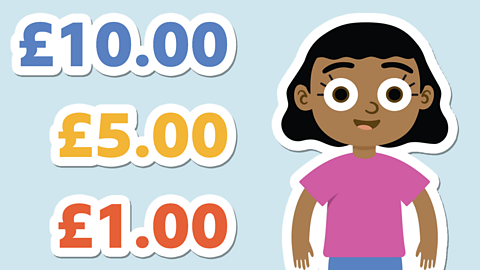Comparing and ordering amounts of money
When you compare and order amounts of money, you need to use this key fact to help you:
£1 = 100 pence
You can use these symbols to compare amounts:

There are different ways to order amounts.
You can put amounts in ascending order (from least to most) and descending order (from most to least).
Quiz: Compare and order amounts of money
Why not see how much you know about this topic already? Then complete the guide and see if you can beat your score.
Comparing pounds and pence
Here are two amounts of money.
Let’s compare them using symbols.

The first amount is shown in pence but the second amount is in pounds and pence.
To make comparing easier, you need to convert them both to the same unit.
So let’s convert £1.21 into pence.
First, you can partition £1.21 into pounds and pence.
You could use a part-whole model for this.
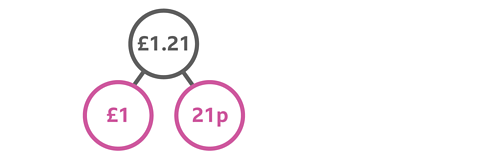
Next, you convert the pound into pence.
You know that £1 is the same as 100 pence.
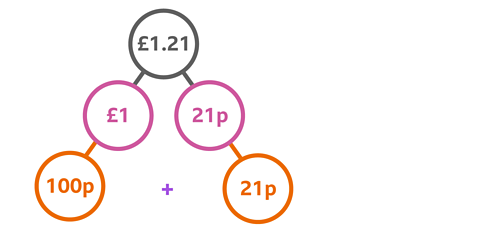
Then you can add the two values in pence.
100p + 21p = 121p
Now both amounts are in pence you can compare them.

You can see that 112p is 'less than' 121p.
Therefore, 112p is 'less than' £1.21.
Compare two or more amounts
When you have more than two amounts of money, you can compare them and then order them.
Maya, Fred and John have been saving money.

Let’s compare them and then put them in ascending order.
This means we will order them from the least to the most.
To compare them you need to convert them to the same unit.
Two of the amounts are already in pounds and pence, so let’s convert Fred’s money into pounds and pence.
You know that there are 100 pence in £1, so you need to divide the value in pence by 100.
A place value chart is helpful for this.

When you divide by 100, the digits move two place value columns to the right. Like this:
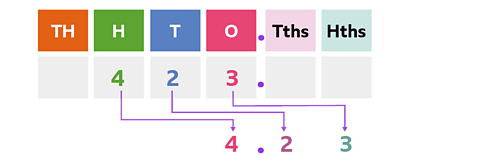
You can see that 423 pence is the same as £4.23.
Now you can order the amounts.
Fred has saved the least (£4.23). Maya is next (£4.32) and John saved the most (£5.03).
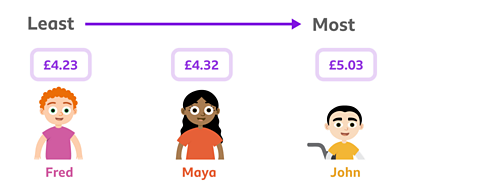
Example 1
These three items are for sale in a shop.

Compare the prices and choose the correct symbols for the boxes.
✓ You need to convert all the amounts to the same unit, so you can compare them.
Two of them are in pence, so let’s convert £8.79 into pence.
First you partition into pounds and pence.
You know that £1 is 100 pence, so £8 must equal 800p.
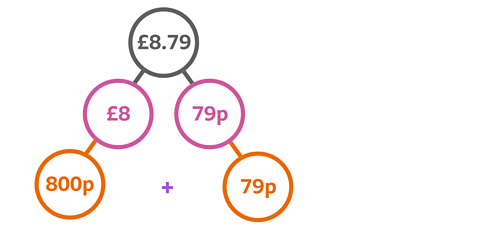
Next add the two values in pence together.
800p + 79p = 879p
Now you have converted the amounts, you can compare the prices using the symbols.

897p is 'greater than' 879p, which is 'less than' 899p.
Example 2
Now look at these three price tags.

Can you put these price tags in descending order?
Remember, descending order starts with the largest amount and goes down to the smallest amount.
✓ Two of the amounts are in pounds, so let’s covert 643 pence to pounds using a place value chart.
You know that 100p is the same as £1, so you need to divide 643p by 100.
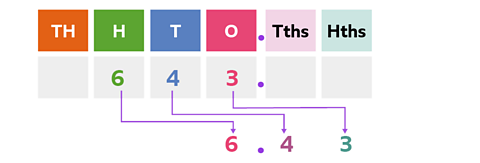
Each digit moves two places to the right along the place value chart.
643p = £6.43
Now all the amounts are in pounds, you can put these in descending order.

Play Guardians: Defenders of Mathematica to get ready for SATs. gamePlay Guardians: Defenders of Mathematica to get ready for SATs.
In this game, use the times tables and more maths skills to defeat monsters and reclaim the Kingdom.

More on Money
Find out more by working through a topic
- count3 of 3
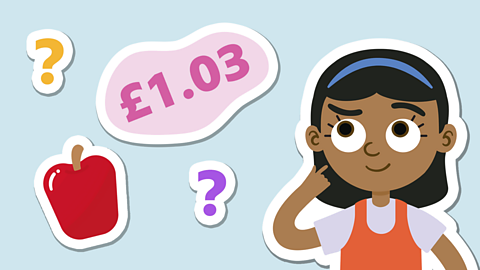
- count1 of 3
